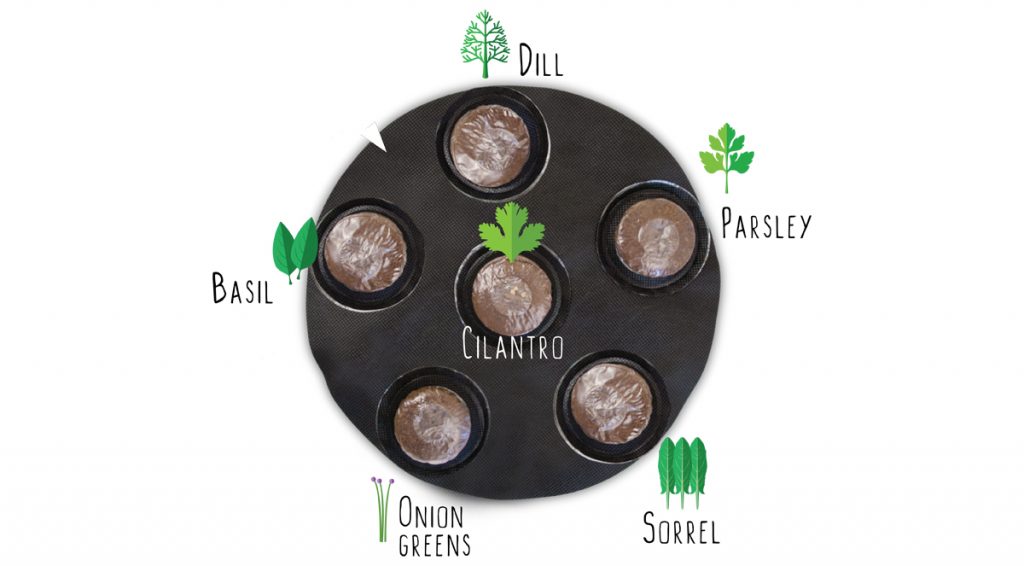
People have been using natural remedies and herbs for centuries to heal. Nowadays we rely too heavily on big pharma but now might be our chance to turn back to Mother Nature and improve our health with the amazing medicinal plants we have access to. We can even easily grow some of them at home.
Choosing the right medicinal herbs to grow is a matter of personal preference. After going through the list and reading about each herb’s most popular usage, you can choose the ones that will aid you and your family with the most common challenges that you encounter.
You must focus on growing herbs that you’ll utilize. The plants you don’t intend to use might undoubtedly liven up your yard, but you should only plant what you want to utilize.
Our list of suggestions is not meant to be read in any particular sequence, so let’s get to it.
1. Peppermint Plants

You’ll note that several plants are both culinary and medicinal. Peppermint is one of the simplest herbs to cultivate since it can be used in a variety of ways, both in the kitchen and as a remedy for ailments.
People should exercise caution while planting peppermint since it may quickly take over and spread over your yard. The most effective way to contain the plant is by using a pot.
In addition to its digestive benefits, peppermint also has anti-nausea and anti-motion sickness properties. Use it like a peppermint herbal tea or tincture when made into a tea or tincture.
2. Calendula

Traditionally, calendula is widely used for its calming effects. Calendula is often added in herbal salves, body washes, and even shampoos, so keep an eye out for it. It has a lovely blossom and is a wonderful addition to any garden or landscaping project.
Seeds from the blooms, which might have different colors, will be dispersed each year. This process will result in a new crop of flowers. It is simple to cultivate and attracts a wide variety of pollinators, including bees and other beneficial insects.
When mixed with peppermint, calendula produces a superb herbal tea despite its unimpressive taste.
3. Bee Balm (Bergamot/Monarda)

Bee Balm, sometimes known as Bergamot or Monarda, is a great source of antimicrobials. Anti-viral, anti-bacterial, and anti-fungal properties. They are some of the greatest therapeutic plants to cultivate since they can address a wide range of ailments.
4. Lemon Balm

Decide where you want to put your lemon balm plants. Since it has so many therapeutic applications, lemon balm is the one herb I’d choose to grow in my garden if I could only have one.
As well as being delicious, it’s also mild and soothing, making it an excellent herb for youngsters. The herb’s potency and effectiveness are well-known.
However, this is not always true in the herbal realm, where a stronger treatment does not always mean a greater risk of injury. Depending on the kind of plant, it may either be very potent or extremely mild.
If you’re feeling tense, merely squeezing a few leaves in your fingers and smelling their scent might help you relax.
5. Tulsi (Holy Basil)

As an adaptogen that boosts energy, Tulsi is also a popular choice due to its culinary applications. You’ll be better able to deal with difficult situations if you use it.
6. Echinacea

To boost your immune system, Echinacea is one of the best herbs to utilize (like if an illness is already in the house). So that it has time to expand, this plant is best picked in the second year. Pull the echinacea up by its roots and remove the whole plant. For this reason, it’s a good idea that you let your bed grow before lifting it.
The roots are the most potent component of the plant, although other sections may be used as well.
7. Rosemary (Rosmarinus officinalis)

Rosemary has the power to restore life. In addition to increasing your energy and positivity, this evergreen woody herb also helps your memory and attention by increasing blood flow to your brain. When you’re running low on energy, this is a great substitute for coffee.
These long-lived, drought-tolerant plants produce a stunning evergreen hedge that is also good for bees. Even if you just have one plant, it will have a big impact.
It’s better to let this plant grow to maturity before harvesting its roots.
8. Lavender (Lavandula)

Some research suggests that lavender may have modest antidepressant properties as well as a positive effect on the neurological system.
A source that you can trust. Add lavender essential oil to your bath to help ease stress, tension, and sleeplessness. Sunburn and acne creams include it as well.
Lavender plants that grow woody do well in conditions of high temperatures, bright sunlight, and little moisture. Adding fresh flowers to honey, butter, lemonade, and even shortbread cookies is a delicious way to incorporate them into a meal. Make a herbal heating pad or eye pillow out of the dried flowers if you’d want to get a little more creative.
9. Oregano

Oregano is essential in our house since it enhances the flavor of pizza so well! In our cuisine, oregano is a common ingredient, but it is also one of the most potent herbs on the market.
The anti-microbial properties of this plant make it a great choice for growing therapeutic herbs. Antioxidants abound in it as well.
10. Garlic

Even if you don’t like the flavor of garlic or onions in cuisine, the therapeutic benefits they provide make them a must-have in every herb garden. All sorts of illnesses may be helped by their anti-microbial properties.
When they are sick, many individuals like to ferment garlic in honey, then take a clove or two at the first symptom of sickness.
Start Planting Your Medicinal Herbs Today!
Store-bought herb labels seldom explain how plants are cultivated or how long the components are exposed to sunshine and hot temperatures while being kept in their plastic containers. To guarantee the finest quality and effectiveness of your herbal treatments, grow them yourself.
These easy-to-grow herbs are good for your garden and your family’s well-being, as well. Bees, among other useful insects, are attracted to a number of them. As a bonus, they may also help keep pests away from more delicate plants.
When planning your garden, think about how much light, water, and temperature the plants will be exposed to over their life cycles. Warm, dry locations in full sun are ideal for plants like rosemary, lavender, and mullein. Cilantro and mint-like wet, shaded places are rich with nutrients.
Each herb garden provides up to $92 worth of Organic, nonGMO Produce! Ready to plant yours?
Click here to discover the easiest and fastest way to grow your own herb garden.


I’m not sure where you are getting your info, but great topic. I needs to spend some time learning much more or understanding more. Thanks for great info I was looking for this information for my mission.
You’re welcome! 🙂
Magnificent items from you, man. I’ve be aware your stuff prior to and you are just extremely magnificent. I actually like what you’ve got here, really like what you’re saying and the way in which in which you say it. You make it entertaining and you continue to care for to keep it smart. I can not wait to read far more from you. This is actually a tremendous website.
Thank you!